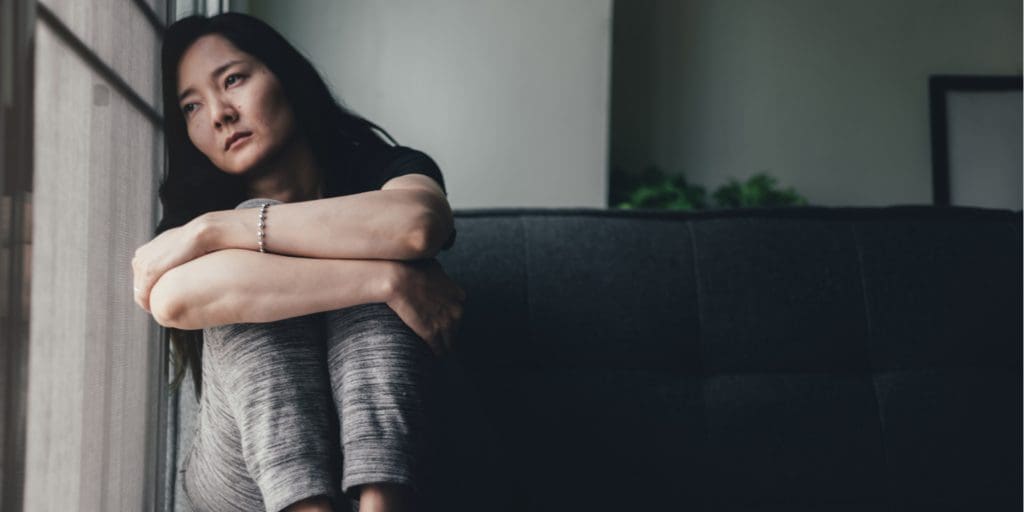Everyone is afraid of something. Whether it’s height or spiders or clowns, fears are part of life, but they’re not overpowering. But when a fear goes from a mild inconvenience to a major hurdle in daily living, it is considered a phobia, which is a serious mental health issue.
Phobias often lead to avoidance behaviors that can severely lower quality of life. For example, an individual with a fear of fire might not feel comfortable going into a public space where they can’t find fire exits or other safety precautions. And with nineteen million Americans facing this issue, it’s clear that a lot of people need help. Keep reading to learn more about phobias and how individuals can get professional help.

A phobia is a type of anxiety disorder that presents as intense, irrational fear of someone or something. Typically, individuals with phobias will avoid the object of their phobia at all costs. When the phobia cannot be avoided, individuals can usually endure exposure to it, but they do so with great distress and worry.
For millions of Americans, phobias make it much harder to lead a happy, productive life. They can make it hard to go to work, to attend school, or to engage in social activities. As a result, phobias often have a negative effect on personal relationships.
Phobias are quite common and surprisingly diverse. Because these fears are not rational, a phobia can be based on virtually anything. The list of phobias is long, but some of the most common types of phobias include:
As you can see, there is a phobia for nearly every object and situation. However, fear of heights and fear of animals may be the most widespread. Phobia disorders often begin in childhood, and while most people grow out of them, some only grow worse over time.
Phobia causes are as varied as phobias themselves. In some cases, phobia disorders are caused by a traumatic event during childhood. Where most children are able to outgrow these fears, others find that their phobias only get worse as they transition into adulthood.
Oftentimes, this condition is caused by exposure to a traumatic situation during childhood. Most children will eventually outgrow their fears, but this is not the case for everyone; sometimes intense fears will persist into adulthood. One study examined twins, and it found that both life experience and genetic predisposition can impact the development of a phobia.
It’s also important to remember that mental illness can run in families. A child whose parent has an anxiety disorder faces higher risk of developing one of their own.
Many mental illnesses run in families. If a child has a close relative with an anxiety disorder, they are more at risk of developing the condition. Additionally, phobias are more common in women than men, with a 12.2% prevalence rate among women and a 5.8% prevalence rate among men. Physical damage can play a role too—phobias are common after traumatic brain injuries.
While intense fear is the most common sign of a phobia, there are other things to look out for. Remember that a phobia can impact someone even when nothing related to that phobia is around them. Some of the most common symptoms of this anxiety disorder include:
The fifth edition of the Diagnostic and Statistical Manual of Mental Disorders (DSM-V), helps mental health professionals diagnose mental health disorders. It can also help mental health workers distinguish between phobias when the source of fear is not immediately clear.
The American Psychiatric Association recognizes three types of phobias:
While specific phobias are easy to diagnose, social phobia and agoraphobia (also called complex phobias) can be more difficult to identify. Moreover, complex phobias are more likely to cause negative impacts on an individual’s wellbeing, and they’re harder to treat.
When diagnosing a phobia, mental health professionals take into account the amount of fear and anxiety, physical symptoms, and how an individual avoids triggers. When possible, identifying the triggering incident for a phobia can help experts diagnose and treat a phobia.
Like other types of anxiety disorders, phobias can sometimes run in families, so family history can be relevant. A diagnosing professional may also ask questions like:
Responding “yes” to any of these indicates that the issue is not a normal fear, but a phobia. And in cases like these, receiving treatment can make a profound difference in quality of life.
Like with other mental health conditions, treating a phobia early is always better. But even if it takes a long time to identify and treat a phobia, individuals can still see great improvements in their mental health.
Most treatment options for phobias fall into one of two categories: therapy or medication. Oftentimes, however, these treatments work best when combined in a treatment program.

Mental health professionals—like therapists, counselors, psychiatrists, and psychologists—can help treat this condition. Specific therapeutic approaches will depend on the individual and their personal history.
The most common type of therapy to treat a phobia is cognitive behavioral therapy (CBT). CBT focuses on identifying and changing negative thoughts, irrational beliefs, and unreasonable reactions to triggers. Usually it will include desensitization (exposure therapy), where the individual gradually exposes themselves to their phobia in a safe, controlled environment. In this way, certain triggers can become much less frightening.
During exposure therapy, a mental health professional will guide the individual with relaxation techniques. These will help reduce feelings of anxiety as they appear, and the patient can learn to use these strategies in daily life.
Medications may also prove useful in treating phobias. Typically, individuals are prescribed selective serotonin reuptake inhibitors (SSRIs) that help control feelings of fear and panic. These are primarily prescribed for people with chronic phobias that cannot be avoided, like agoraphobia or social anxiety disorder.
For more situational phobias, anti-anxiety medications like Xanax may temporarily be prescribed for an exposure event. For example, someone taking a flight might request a couple of medications from their doctor to help control their emotions.
With professional treatment, the outlook is good for individuals with phobia disorders. Regardless of the symptoms of phobias that you’re experiencing, a mental health program can do a lot of good for your quality of life. While phobias do not always go away completely, you can at least expect to learn skills that will empower you to stop phobias from controlling your life.
In fact, between 75 and 80 percent of people who receive professional mental health treatment for phobias will eventually overcome their fears. Those are good odds, and they only get higher the sooner you ask for help.
For the best results, you’ll want to start treatment as soon as possible. With anxiety disorders like this, it will always be easy to find a reason not to attend treatment. But the sooner you start, the sooner you can change your life!
The specially trained staff at Georgetown Behavioral Hospital in Georgetown, Ohio are here to help you make a full recovery from phobias. To speak with our friendly admissions specialists who can answer your questions, call us at 937-483-4930 or ask your questions through our confidential contact form. Help is ready and waiting; all you have to do is ask!










